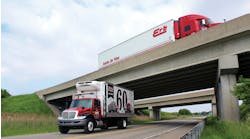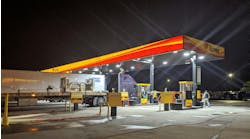These are difficult times, placing ever-increasing strain on both private and for-hire motor carriers. This strain is experienced on the “front line” of safety and risk-management operations by management calls to scale back budgets and eliminate all non-essential activities. Given this environment, I'd like to offer a three-pronged strategy that will ensure your department is positioned to survive the downturn.
Consisting of accomplishing more-with-less, laser-like program targeting and demonstrated impact, this approach can be implemented across many operational scenarios and models.
Strategies to accomplish “more with less” consist of implementing operating practices/staffing models and tools/services that will increase the efficiency of your safety/risk management teams.
As to organizational and staffing efficiency, consultants generally consider these five factors first, which comprise an operating model:
Configuration: Organization of tasks from both geographic and ownership perspectives.
Process: Methods for standardizing and/or optimizing safety processes.
Platform: Tools needed to both run the business and reduce the complexity of activities.
People: Identification of role requirements for talent, skills and knowledge and standardization of roles.
Performance Measurement: Identification and measurement of Key Performance Indicators (KPIs)
For each of these five factors, first examine your present design, then identify bottlenecks, inefficiencies and inconsistencies. Finally, identify those areas which might significantly benefit from a redesign.
For example, efficiencies might be gained by migrating compliance-related training (e.g., hazard awareness) from a classroom to a computer-based venue.
Strategies should be designed to focus efforts on identifying, intervening and managing those individuals who repeatedly exhibit unacceptable driving behavior. Quite simply, a targeted safety program will yield more “bang-for-the-buck” than a traditional “broad brush” program.
Finally, many safety professionals sell themselves short by not properly quantifying the economic value of their activities. Our efforts should first depict the value of reduced crashes and injuries, and secondly, the value of efficiency gains achieved by doing more with less.
When it comes to the value of reduced crashes, begin by comparing normalized crash rates (e.g., preventable crashes per million miles traveled-VMT) on a year-by-year basis. Then, use these differences to determine the number of crashes prevented through your efforts.
With the number of prevented crashes calculated, use your internal analysis or commonly accepted crash-cost values to quantify the cost in dollars saved. The Federal Motor Carrier Safety Administration, for example, publishes a report entitled “Unit Costs of Medium and Heavy Truck Crashes” that sets the average cost of all crashes at $91,112, based in 2005 dollars. This report can be found www.fmcsa.dot.gov. Use this crash-cost reduction savings figure along with any efficiencies gained to create a scorecard that can be reported to senior management that indicates the economic impact of your safety operations.
I urge you to begin this task immediately. Your efforts do have value — and it is imperative to demonstrate this value to your management team.
Jim York is the ass't. vice president of technical services for Zurich Services Corp. Risk Engineering in Schaumburg, IL.


